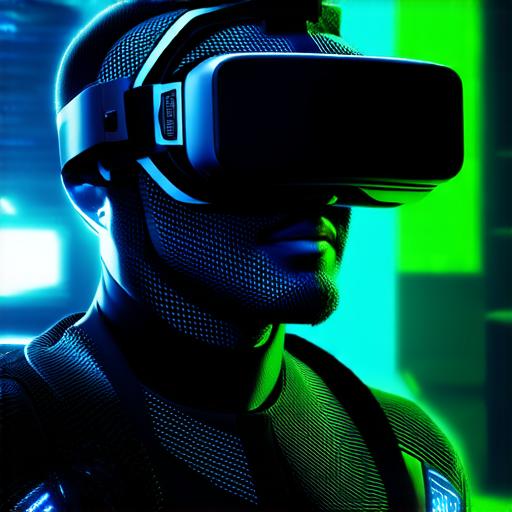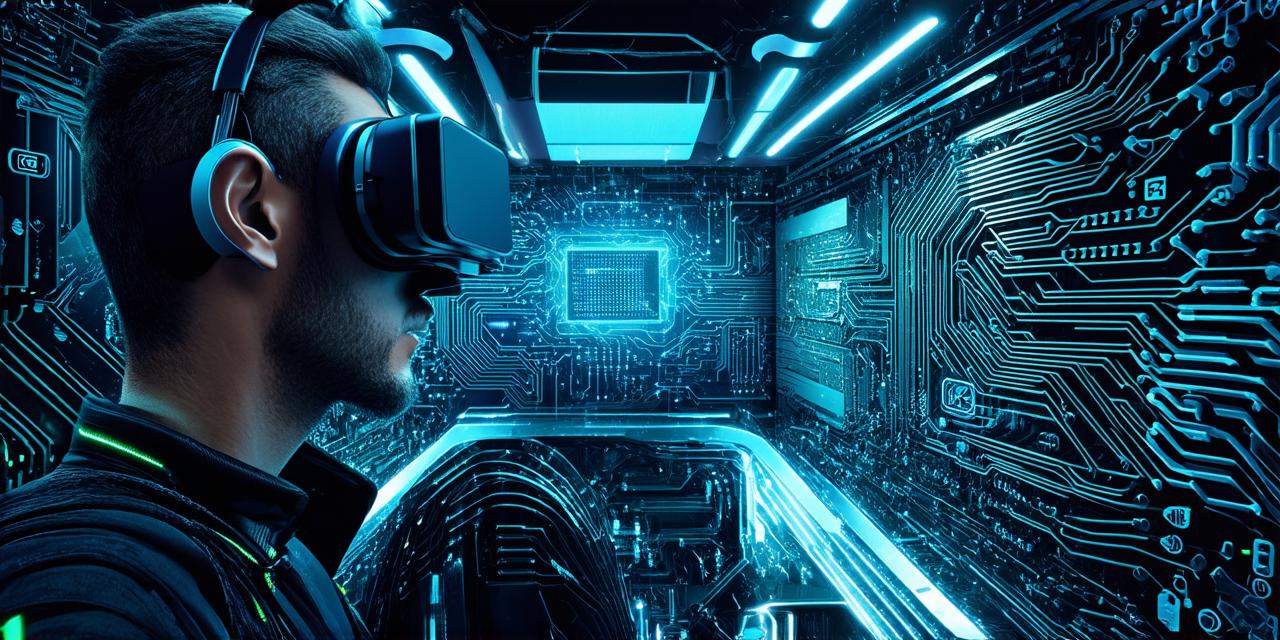Virtual reality (VR) technology is an innovative and rapidly evolving field that has gained popularity among developers and consumers alike. VR allows users to immerse themselves in simulated environments, experience them as if they were real, and interact with them using various devices.
1. Head-Mounted Display (HMD)

The head-mounted display (HMD) is a crucial component of VR technology that sits on top of the user’s head and displays visual content in stereo. The HMD tracks the user’s movements using sensors such as accelerometers, gyroscopes, and magnetometers to create an immersive experience. The HMD also provides a spatial reference point for the virtual environment, allowing users to perceive depth and distance accurately.
2. Motion Capture
Motion capture is another essential component of VR technology that involves tracking the movement of the user’s body in real-time. This information is then used to move the virtual objects in the simulation, creating a more realistic experience. There are various types of motion capture systems, including optical, ultrasonic, and inertial, each with its advantages and limitations.
3. Computer Hardware
The computer hardware required for VR typically includes a high-performance graphics card, CPU, and RAM. The hardware must be powerful enough to render the virtual environment quickly and smoothly, ensuring that users experience minimal lag or motion sickness. In addition, the hardware must support multiple displays and have enough processing power to track the user’s movements in real-time.
4. Software
The software component of VR includes game engines, middleware, and application development tools. These tools are used to create interactive applications that can run on the VR platform. There are various game engines available for VR development, including Unity, Unreal Engine, and CryEngine, each with its unique features and capabilities.
How Virtual Reality Technology Works
1. Stereo Rendering
Stereo rendering is a critical process in VR technology that involves creating two separate images for each eye, which when viewed through the HMD, creates a 3D image. The stereo effect makes it difficult for the brain to discern depth and distance, creating an immersive experience. Stereo rendering can be achieved using various techniques, including parallel projection, texture synthesis, and depth cues.
2. Motion Tracking
Motion tracking is a crucial process in VR technology that involves tracking the user’s movements and translating them into virtual movement. The sensors on the HMD, such as accelerometers, gyroscopes, and magnetometers, work together to determine the user’s position in space and adjust the virtual environment accordingly. Motion tracking can be achieved using various techniques, including optical flow, inertial measurement, and ultrasonic sensing.
3. Content Creation
Creating content for VR involves designing interactive environments and experiences that can be viewed through the HMD. This includes game development, immersive experiences, and educational applications. Creating VR content requires specialized skills and knowledge, including 3D modeling, programming, and design.
Case Studies and Personal Experiences
1. Oculus Rift
The Oculus Rift is one of the most popular VR headsets on the market. It uses motion tracking sensors and a powerful computer to create a seamless experience for users. Users can explore virtual environments, play games, and even attend virtual concerts and events. The Oculus Rift also supports room-scale VR, allowing users to move around the virtual environment and interact with objects in a more natural way.
2. HTC Vive
The HTC Vive is another popular VR headset that uses motion tracking sensors and a powerful computer to create an immersive experience for users. The HTC Vive also supports room-scale VR, allowing users to move around the virtual environment and interact with objects in a more natural way. The HTC Vive is particularly popular among developers due to its high-quality motion tracking sensors and support for various game engines.
3. PlayStation VR
The PlayStation VR is a VR headset developed by Sony that uses motion tracking sensors and a powerful computer to create an immersive experience for users. The PlayStation VR is particularly popular among gamers due to its integration with the PlayStation gaming platform and support for various game engines.
4. Samsung Gear VR
The Samsung Gear VR is a VR headset developed by Samsung that uses motion tracking sensors and a powerful computer to create an immersive experience for users. The Samsung Gear VR is particularly popular among developers due to its support for various game engines and integration with Samsung’s mobile devices.
5. Personal Experience
As someone who has used VR technology extensively, I can attest to the power of these components in creating an immersive experience. Whether it’s exploring a virtual environment or playing a VR game, the combination of motion tracking, stereo rendering, and content creation creates a truly unique and unforgettable experience. However, it’s important to note that VR technology is still in its early stages, and there are many challenges to overcome, including motion sickness, tracking accuracy, and content creation costs.
Conclusion
In conclusion, virtual reality technology is an exciting and rapidly evolving field that requires a combination of hardware and software components to create an immersive experience for users. The key components include the head-mounted display, motion capture, computer hardware
